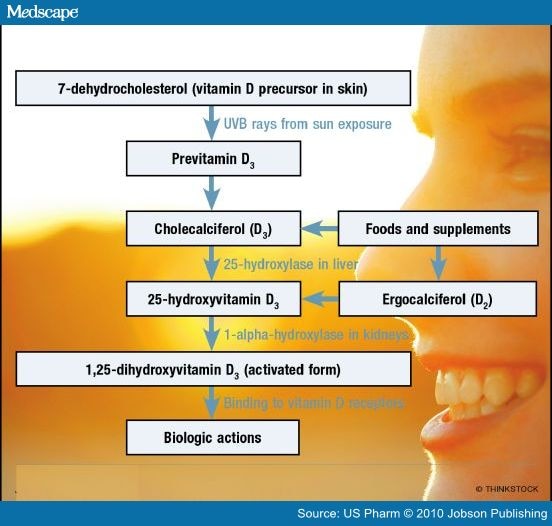Pharmacology
Vitamin D is a fat-soluble vitamin that acts as a steroid hormone. The body makes vitamin D from cholesterol through a process triggered by the action of the sun's ultraviolet B rays on the skin (FIGURE 1). Factors such as skin color, age, amount and time of sun exposure, and geographic location affect how much vitamin D the body makes. Vitamin D influences the bones, intestines, immune and cardiovascular systems, pancreas, muscles, brain, and the control of cell cycles.[6] Its primary functions are to maintain normal blood concentrations of calcium and phosphorus and to support bone health.
Figure 1.
Vitamin D synthesis.
UVB: ultraviolet B.
Source: Reference 32.
Vitamin D undergoes two hydroxylations in the body for activation. There are several metabolic products or modified versions of vitamin D (TABLE 1). Calcitriol (1,25-dihydroxyvitamin D3), the active form of vitamin D, has a half-life of about 15 hours, while calcidiol (25-hydroxyvitamin D3) has a half-life of about 15 days.[6] Vitamin D binds to receptors located throughout the body.
US Pharmacist © 2010 Jobson Publishing
Cite this: Vitamin D Supplementation: An Update - Medscape - Oct 01, 2010.







Comments